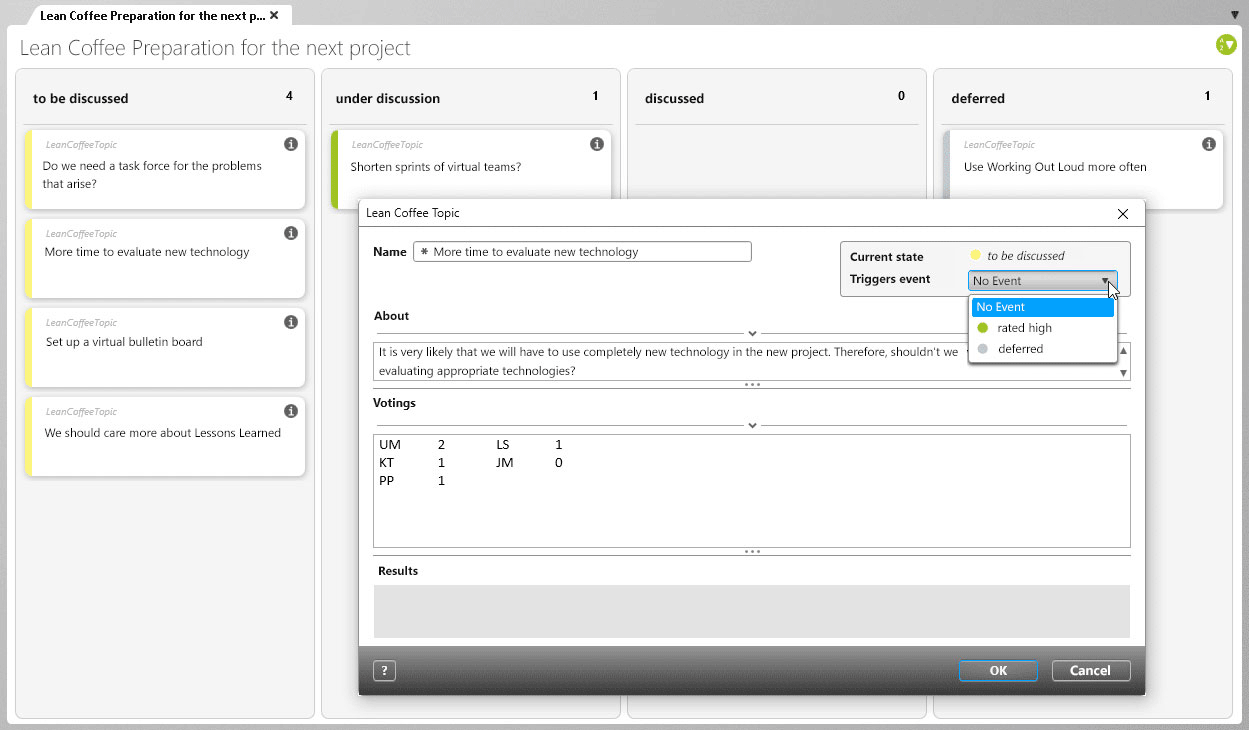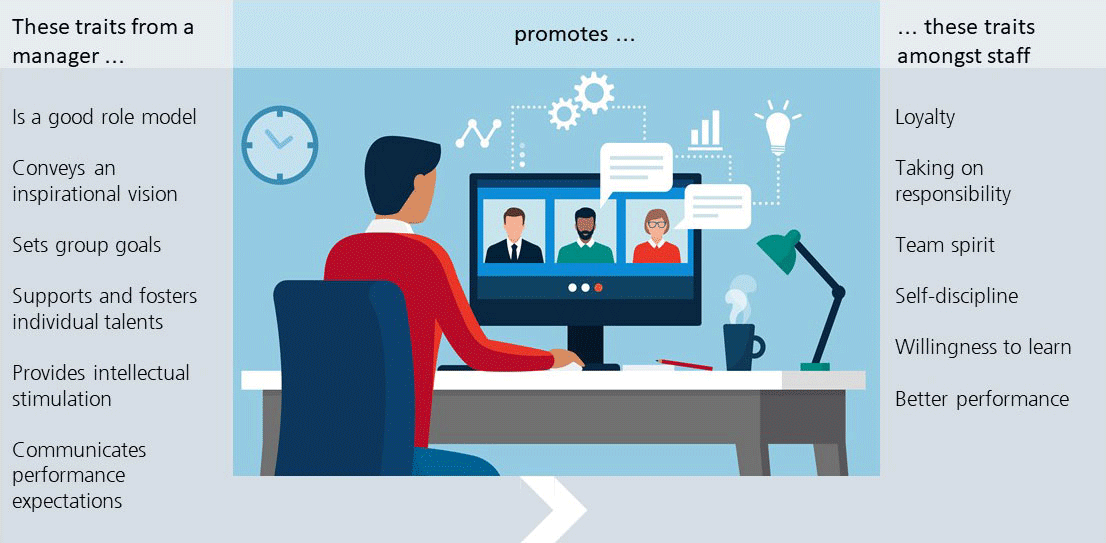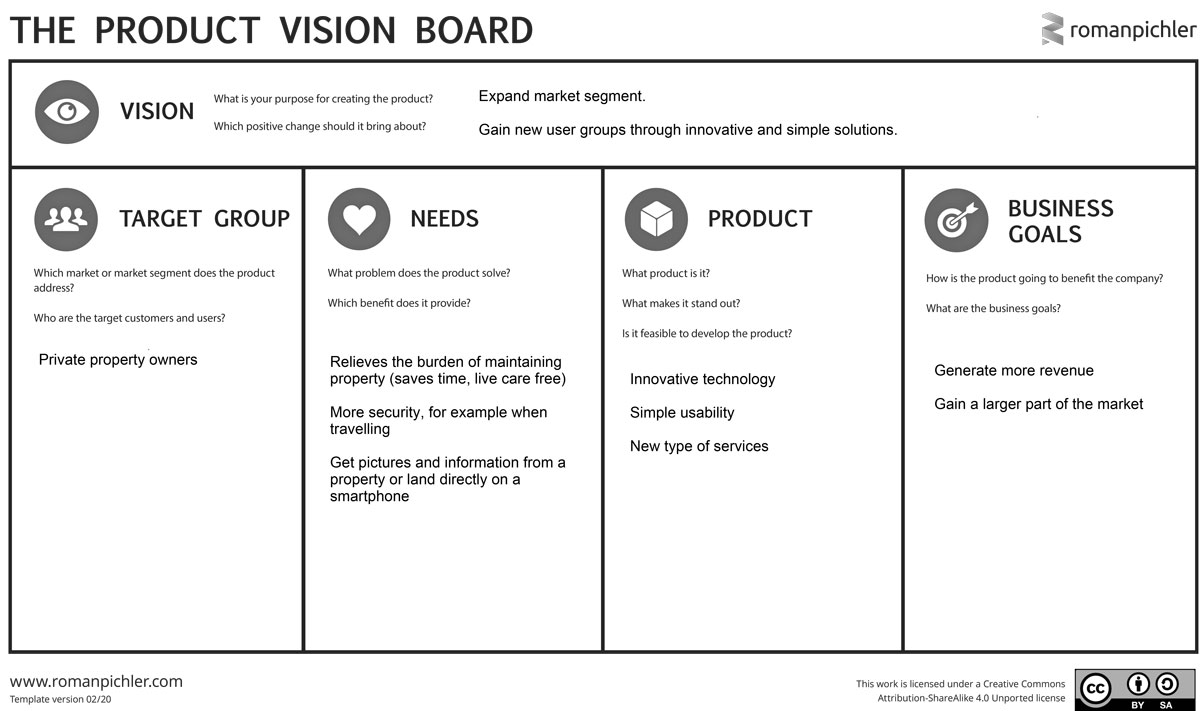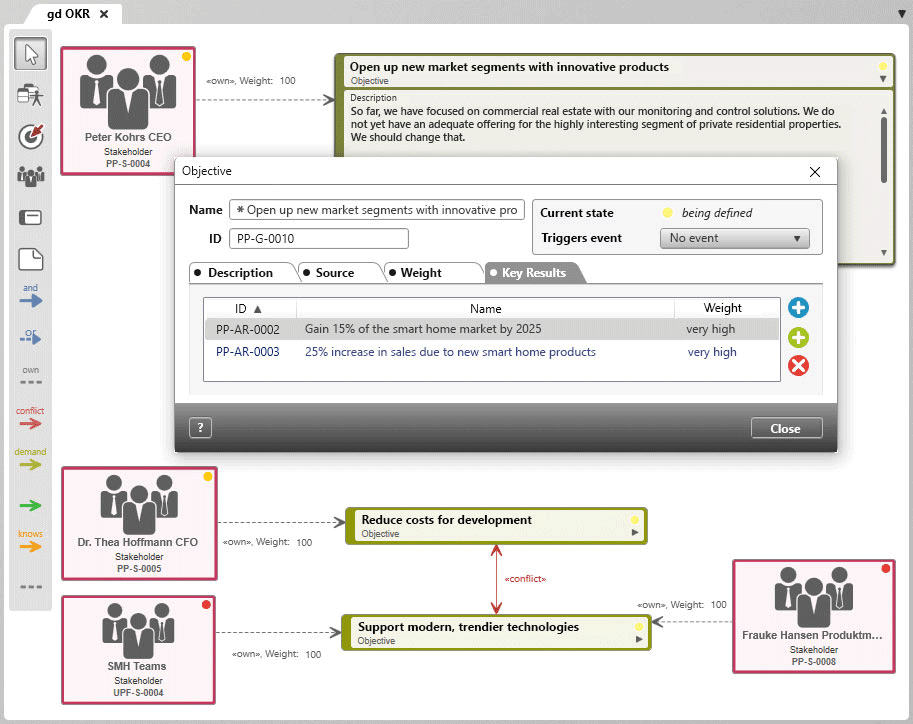A few years ago, I heard a lecture on managing distributed teams. Practical problems were discussed, such as coordinating employees in different time zones. It also dealt with less straightforward aspects, such as the cultural and mental differences of widely distributed teams within the same company. I found the presentation fascinating but also somewhat removed from the realities that ‘normal’ companies experience. After all, aren’t such concerns reserved for the global players? I also remained skeptical about whether or not remote management can work in the first place.
Of course, with the recent requirement of working from home, remote management isn’t an abstract concept for smaller and medium-sized companies anymore. It’s the reality. The question is not can, but rather how does it work? Even when they are only a few kilometers away, how can distributed teams be led through virtual means? Specifically:
- How can I, as a leader, ensure that my employees work towards a common goal?
- What can I do to maintain motivation and creativity in the absence of interactive events like face-to-face workshops?
- How is it possible to detect and deal with the nuances, moods, conflicts, and concerns that direct communication and the daily, spontaneous encounters in the office so easily shed light on?
Create Trust
In our current times, command and control management does little to counter the sense of isolation and other negative effects that working from home brings. Instead, it leads to a detrimental effect on employees’ motivation and performance. When managing remotely, the traits of command and control need to be replaced by the principles of agile leadership: commitment and participation. Above all one thing is required: trust between management and staff.
Building trust doesn’t happen over emails. You create trust through face-to-face encounters, even when they are only virtual. Video conferences, work and review rounds, feedback meetings, even events to celebrate. When they are done in a virtual space, it’s more vital than ever that employees feel a sense of trust and that they’re being listened to. For a leader, building trust means fostering social togetherness, responsibility, and participation among employees. This requires social competence and a repertoire of techniques that facilitate creativity and boost productivity in a virtual setting.
An example of a team-building exercise that works remotely is Lean Coffee [1].
Promoting Collective & Self-Management with a Virtual Lean Coffee
Employees have something on their minds and want to have a discussion? Create a forum and promote a sense of community by encouraging meetings according to the Lean Coffee method.
Originating in Agile management, the Lean Coffee method involves a voluntary meeting of three to twenty people. What distinguishes it from a normal team meeting over a coffee is that there is no pre-defined agenda.
The Lean Coffee method lends itself to a variety of purposes and – importantly for remote management – can also be applied in virtual environments through digital means. objectiF RPM, for example, offers everything you need for a virtual Lean Coffee. With its Kanban board that offers multi-user access and the possibility to define your own result types, objectiF RPM also provides an integrated video conference and chat function for a virtual Lean Coffee.
This is how Lean Coffee works with objectiF RPM:
- Employees invite members of a chat group to join a virtual Lean Coffee via a post in the chat box. The invitations only need to state the time and date, the duration (optimally 60-75 minutes), and a general conversation topic (e.g. “I’m wondering how to better prepare for the next project. Let’s talk.”). Then a video conference is held for the chat group.
- A host starts the video conference at the scheduled time with the messenger in objectiF RPM. Each member of the chat group is automatically notified and can decide whether or not to participate.
- The host welcomes the participants, and when there are more than 7 participants will be helped by a co-moderator to mediate.
- At the beginning all participants get a few minutes to write down the topics they wish to discuss onto a ‘to be discussed’ section of objectiF RPMS’s customizable Kanban board. (See figure 1)
- After topics of discussion have been collected and noted down on the Kanban board, ideally each participant gives a brief overview of their talking point.
- A vote is then held. In Lean Coffees held in-person, Dot-Voting is usually used to democratically determine what gets discussed. The virtual alternative: the participants vote through the chat-box, each with 3 votes at their disposal. The topics with the most votes are then put under the ‘under discussion’ section of the Kanban board.
- And off we go! That is, almost. Firstly, the participants need to agree on a time frame for each topic. If the time for a topic expires, but the discussion is still in full swing, the participants can quickly vote with a thumbs up or down whether or not to stay on the topic.
- The voting results can be entered and viewed simultaneously during the meeting. My recommendation for a suitable topic form can be seen below in figure 1.
- If and when everyone agrees that a topic has been dealt with, it can be moved to the ‘discussed’ section of the Kanban board.
- Once the participants have decided on what measures to take, these can be created and scheduled straight away as activities in objectiF RPM.
 Figure 1: For Lean Coffees, you have to create a result type in objectiF RPM – here it is called ‘Lean Coffee Topic’ – define its status (to be discussed, under discussion, or discussed), and create a suitable form for documentation. This is done on the Kanban board and only takes a few minutes.
Figure 1: For Lean Coffees, you have to create a result type in objectiF RPM – here it is called ‘Lean Coffee Topic’ – define its status (to be discussed, under discussion, or discussed), and create a suitable form for documentation. This is done on the Kanban board and only takes a few minutes.
Management Style Makes the Difference
But there needs to be substance to go with the style. All employees must have a uniform vision and clarity over the goals they strive to achieve. In a nutshell, creating trust, having an integrative influence, clear communication, and promoting a sense of personal responsibility and self-organization are the essential requirements to manage remotely.
A leadership style that encompasses all these aspects is known as transformational leadership [2].
Transformational leadership is all about changing the values and attitudes of employees – turning their focus away from personal goals and towards collective objectives.
The leader’s task is to communicate these visions and goals and point out the pathway to achieve them. Support and encouragement need to be given to each employee along the way, and the leader needs to constantly act as a role model.
 Figure 2: The Transformational Leader Concept
Figure 2: The Transformational Leader Concept
How can a common vision be communicated to employees feeling isolated working from home? How can goals be developed communally?
Some techniques already exist for the virtual sphere. Here are two examples:
Agree on a vision and common goal with a virtual Vision Board and Objectives & Key Results (OKR)
A vision, such as for a new product or product version, can be developed interactively, collaboratively, and virtually with the help of a vision board, such as the one developed by Roman Pichler (see Figure 3). objectiF RPM comes with a pre-structured, customizable vision board and this is how it can be used in a virtual team:
- Create a group chat with everyone who is working on the same project.
- Start a video conference for them through the group chat.
- Open the vision board and share the application window.
- The discussion can begin. Fill in the vision board, save it and assign it with the applicable version using the document management system of objectiF RPM.

Figure 3: Usually in a real-life meeting a team gathers around a large vision board in a meeting room, with pens and color post-its on the table to annotate it. This process of working together creatively and interactively towards a common goal can be virtually replicated with objectiF RPM.
The OKR method helps in the development of common goals. Standing for Objectives & Key Results, OKR is characterized by two distinctive features:
- Qualitative objectives are defined by quantified key results, allowing the measurement of success through the achievement of objectives.
- Objectives in OKR are neither concretely defined at the beginning of a project nor assessed only at the end. Rather, goals are reviewed regularly (usually in three-month cycles) in short meetings. This is the team’s own responsibility.
With these principles, OKR aims to boost the motivation of employees.
In objectiF RPM the video conference function goes a long way in helping to define your goals according to the principles of OKR. The goal diagrams illustrated directly below in Figure 4 also provide a big helping hand in making goals and key results visible, traceable, and easy to modify.

Figure 4: Goals and goal diagrams are standard elements of objectiF RPM. In this example, user-specific result types display the key results. The form objectives and key results have been customized to the specific needs of the team. This is just one possibility objectiF RPM offers for tailoring the software to fulfill the user’s requirements.
Conclusion
Remote management has become a necessity for most companies today. The principles of transformational leadership, which focus on building trust and responsibility within a workforce, form an instructive model for any leader navigating the difficulties and pitfalls that surround remote management. Whilst remote management is a new reality for many companies, the ethos of transformational leadership is hardly novel.
As early as 1985, Bernhard M. Bass transplanted the principles of transformational leadership from political science into the world of business. Bass argued that employees had to have a sense of responsibility and the capacity to lead themselves. Theoretically, rather than practically, this perspective has been widely adopted in business management. The current necessity to work from home, however, means that the theory needs to be put into practice. It’s vital now more than ever to have a management style and structure that promotes a positive, productive working atmosphere and helps stimulate creativity and team cohesion to counter the isolating and demotivating effects that virtual communication and contact often bring.
With its collaborative functions, methodical elements, and adaptability, objectiF RPM lends a big helping hand in when it comes to the daunting task of remote management.
Want to get to know objectiF RPM? Click here to download the free trial edition.
Sources:
[1] Lean Coffee was developed by Jim Benson and Jeremy Lightsmith in 2009 as a moderation format. Further information can be found here.
[2] Wikipedia on transformational leadership.

